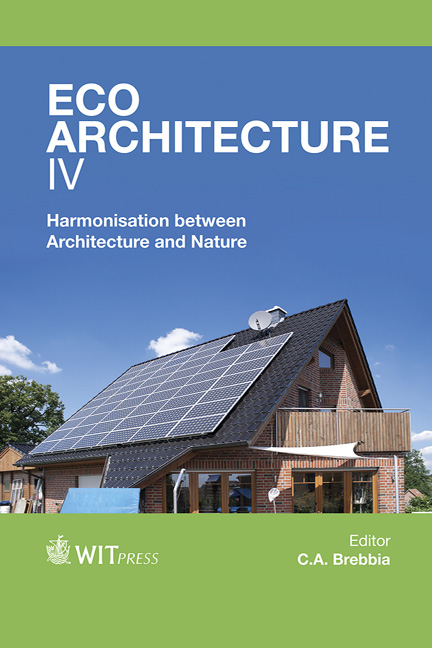Zero-cooling-energy-buildings In Hot Climates: Experiences And Results From A University Teaching Course
Price
Free (open access)
Transaction
Volume
165
Pages
12
Page Range
361 - 372
Published
2013
Size
1,317 kb
Paper DOI
10.2495/ARC120321
Copyright
WIT Press
Author(s)
U. Dietrich & S. Calderon
Abstract
In an architectural master’s course we examined the chances to reach a Zero (Cooling)-Energy-Building for different (hot) climatic locations, deduced design rules and developed proposals for prototypical buildings. Firstly, the climate of each location was analysed, along with vernacular and best practice buildings. Thus, first design rules were developed taking the respective climate into consideration. Then a typical office with common use was chosen and adapted by defining facades, size and placement of windows, shading systems, ventilation strategies and construction techniques. Afterwards, this office was simulated (TRNSYS) and the resulting indoor temperatures assessed by EN 15251 naturally ventilated (\“Type Alpha”) and air conditioned (\“Type Beta”). It was examined, whether the first rules already lead to a good solution or the optimisation through simulations is the main key. In the three locations (Cape Town, Madrid and San Salvador) the ZCEB standard was achieved, both for Beta and Alpha buildings. In the Alpha buildings active cooling could be completely avoided by passive measures, whereas in Beta buildings cooling energy was needed. But for both building types an energy demand for heating, cooling, artificial light and ventilation is remaining. To reach a zero energy building it has to be covered by renewable energies which were gained from the surface of the building (PV) or its direct surrounding (e.g. geothermal energy). This sets (new) limits to the maximum number of floors and the minimal size of the estate leading to adapted rules for urban planning.
Keywords
zero-energy-building, teaching methods, adaptive comfort models, hot climates, vernacular architecture, building simulation, design rules





